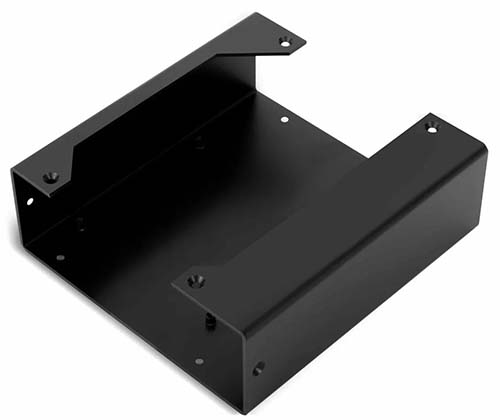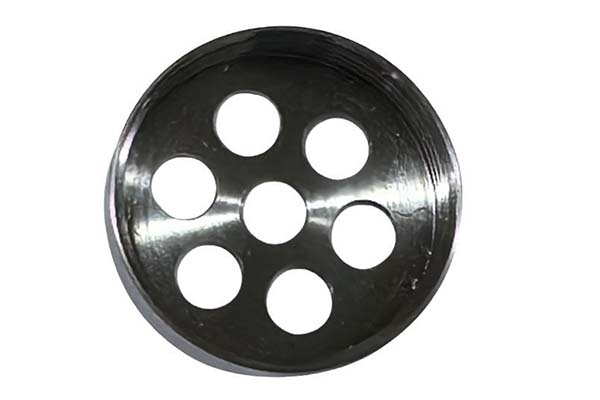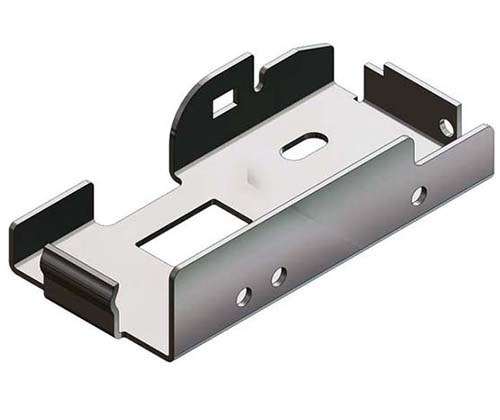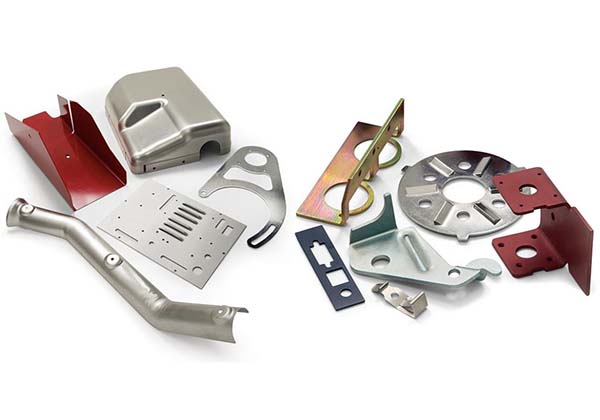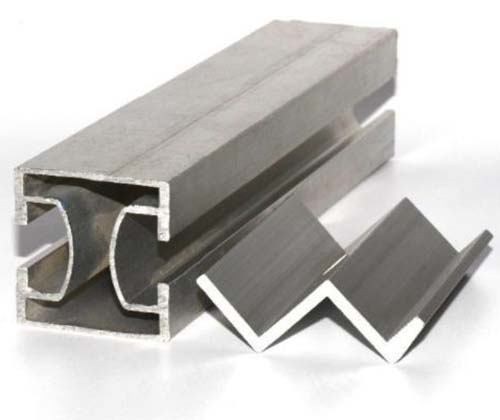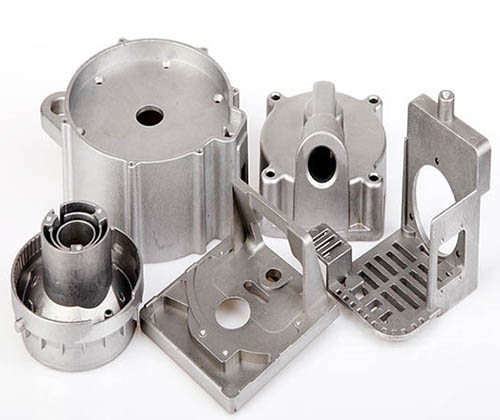You’ve chosen A380 aluminum alloy for its reputation as a reliable, all-purpose die casting material, expecting parts with consistent flow, strength, and finish. But your production line is hitting snags: the molten alloy sometimes clogs the die’s thin sections, leaving incomplete castings. Some parts have uneven hardness—soft spots that wear quickly—while others suffer from micro-porosity that causes leaks in pressure tests. Maybe the cycle time is longer than expected, or the die wears faster than with other alloys, cutting into profits. Worse, your “high-fluidity” parts lack the sharp details needed, requiring costly rework that undermines A380’s promise of efficiency.
A380 aluminum alloy is the most widely used die casting aluminum alloy, prized for its balanced material properties and versatility. Its unique eutectic composition (rich in silicon and copper) delivers exceptional casting fluidity and strength, making it ideal for everything from automotive parts to consumer electronics. But unlocking its potential requires mastering the die casting process, from cold-chamber setup to post-treatment. In this guide, we’ll dive into die casting A380, helping you leverage its strengths to create high-quality, cost-effective parts for high-volume production.
Material Properties: What Makes A380 Stand Out
A380’s dominance in die casting comes from its well-rounded material properties—a synergy of alloying elements (silicon, copper, magnesium) that balances castability, strength, and durability:
- Mechanical performance: A380 delivers consistent mechanical properties that suit most industrial needs. It has a tensile strength of 310-350 MPa, yield strength of 160-180 MPa, and elongation of 3-5%—enough to withstand the stresses of engine components and structural brackets. Its hardness (80-90 HB) strikes a balance between wear resistance and machinability, allowing post-casting drilling or threading without excessive tool wear. These properties remain stable across batches, reducing quality control headaches.
- Casting fluidity and structure: A380’s eutectic composition (10-13% silicon, 3.5-4.5% copper) gives it exceptional casting fluidity—it flows easily into thin walls (as thin as 0.8 mm) and intricate cavities, capturing fine details like threads or logos. This fluidity stems from silicon, which lowers the alloy’s melting point (570-590°C) and reduces viscosity. When properly cast, A380 forms a fine grain structure (refined by rapid cooling in the die), which enhances strength and minimizes internal defects. Its density (2.7 g/cm³) keeps parts lightweight, while its specific gravity (2.7) provides a solid feel in hand tools and consumer products.
- Resistance and conductivity: A380 offers moderate corrosion resistance—its natural oxide layer protects against mild moisture, though it benefits from plating or painting for outdoor use. Its thermal conductivity (130-150 W/m·K) is sufficient for heat-dissipating parts like electrical housings, while its electrical conductivity (25-30% IACS) works for low-current electrical connectors. The copper content (3.5-4.5%) boosts strength but slightly reduces corrosion resistance compared to magnesium-rich alloys—an acceptable trade-off for most applications.
Die Casting Process: Optimizing for A380
A380’s properties demand specific die casting process controls to maximize its potential, from injection parameters to die design:
- Cold-chamber essentials: A380’s high melting point requires cold-chamber die casting. Key parameters include injection speed (2-4 m/s) and injection pressure (70-100 MPa)—high enough to push the alloy into thin sections but low enough to avoid die damage. The die (typically H13 tool steel) should be preheated to 200-250°C to prevent cold shuts, with die maintenance (regular polishing) critical to maintain surface finish. A380’s silicon content can cause die soldering (alloy sticking to the die), so die lubrication (water-based graphite) must be applied evenly to all surfaces.
- Die design and cooling: A380’s fluidity allows more flexible die design than less castable alloys, but attention to detail still matters. Draft angles of 1-1.5° (smaller than for some alloys) ease ejection without sacrificing part accuracy. Venting (0.15 mm gaps) in deep cavities prevents gas entrapment, which causes porosity. The gating system should use wide, short runners to minimize pressure drop—A380 flows best when injected quickly, so gates should be sized to fill the die in 0.5-1 second. Cooling rate is critical: faster cooling (50-80°C/s) refines grain structure, boosting strength, while slower cooling in thick sections reduces internal stress.
- Post-casting steps: A380 requires minimal post-casting treatment compared to other alloys, reducing production time. Shot blasting (80-120 grit) removes surface oxides, preparing parts for plating or painting. Unlike some aluminum alloys, A380 doesn’t benefit from heat treatment—its properties are optimized by the casting process alone. Quality control focuses on porosity (checked via X-ray for critical parts) and dimensional accuracy (typically ±0.05 mm for parts under 100 mm), ensuring consistency across production runs.
Applications: Where A380 Excels
A380’s versatility makes it the go-to alloy for diverse applications, from heavy industry to consumer goods:
- Automotive and industrial: Automotive parts are A380’s largest market—transmission housings, oil pans, and valve covers rely on its strength and fluidity to meet tight tolerances. Its ability to withstand engine heat (up to 150°C) makes it ideal for engine components like water pumps and alternator housings. In industrial equipment, A380 is used for pump bodies, compressor parts, and gearboxes—its wear resistance and machinability simplify maintenance and repair.
- Electrical and consumer products: Electrical housings for power tools, chargers, and control panels use A380 for its electrical conductivity and heat dissipation. Its smooth as-cast surface (Ra 2-4 μm) reduces finishing costs for consumer products like laptop bases, small appliance frames, and lighting fixtures. Electrical connectors benefit from its ability to hold fine threads and tight tolerances, ensuring reliable connections.
- Hardware and medical: Hardware components (door handles, lock bodies) leverage A380’s corrosion resistance and aesthetic appeal—plated A380 parts rival chrome-plated steel at lower cost. In medical devices, non-magnetic A380 is used for instrument housings and MRI-compatible components, where its smooth surface resists bacterial growth and simplifies sterilization.
Performance and Benefits: Why A380 is a Workhorse
A380 offers performance and benefits that make it the top choice for high-volume die casting:
- Consistency and reliability: A380’s properties vary little between batches, reducing scrap rates and rework. Its predictable casting fluidity ensures 95%+ fill rates for complex molds, while its consistent tensile strength and hardness minimize quality control failures. This reliability is critical for just-in-time production, where delays due to defective parts can shut down assembly lines.
- Cost efficiency: A380’s combination of fast cycle time (30-60 seconds per part) and long die life (500,000+ cycles) lowers per-unit costs. Its good fluidity reduces the need for expensive die modifications, while minimal post-casting treatment cuts processing time. Scrap A380 is fully recyclable, with reclaimed material retaining 95% of its properties—reducing material costs and environmental impact.
- Design flexibility: A380’s ability to fill complex geometries (thin walls, internal channels, fine details) eliminates the need for assembly, reducing part counts and costs. Its compatibility with plating, painting, and anodizing allows customization for aesthetics or function—from matte black finishes on power tools to bright chrome on automotive interiors. This flexibility makes it suitable for everything from utilitarian brackets to decorative trim.
Yigu Technology’s Perspective: Mastering A380 Die Casting
At Yigu Technology, A380 is our go-to alloy for clients needing reliable, cost-effective parts. We optimize injection speed and pressure to maximize its casting fluidity, ensuring even fill in thin sections. Our die designs feature precision venting and gating systems to minimize porosity, with strict quality control (including X-ray and hardness testing) to ensure consistency. Whether you need automotive parts, electrical housings, or consumer products, we leverage A380’s strengths to deliver parts that balance performance, precision, and cost. Die casting A380 isn’t just about manufacturing—it’s about delivering predictable, scalable solutions for high-volume production.
Frequently Asked Questions (FAQ)
- Why does my A380 have porosity in thick sections?
Porosity in thick areas (over 5 mm) is often caused by slow cooling, which traps gas. Increase cooling rate in thick sections by adding water channels in the die, keeping metal temperature below 600°C during solidification. Ensure proper venting (0.15 mm gaps) to release trapped air, and degas the molten alloy (remove hydrogen) using a rotary degasser before casting. Reducing injection pressure slightly in thick sections can also minimize gas entrapment.
- Can A380 be used for outdoor applications?
A380 has moderate corrosion resistance (enough for indoor use) but needs protection outdoors. Painting or powder coating provides basic protection, while anodizing (especially hard anodizing) creates a wear-resistant, corrosion-proof layer. For marine or salty environments, chrome or nickel plating offers the best protection—A380’s smooth surface ensures good adhesion, with plated parts lasting 5-10 years in harsh conditions.
- How does A380 compare to other die casting alloys?
A380 outperforms 360 series in tensile strength (310 MPa vs. 290 MPa) and fluidity, making it better for complex parts. It offers better machinability than 413 (which has more silicon) and higher strength than 518 (which has better corrosion resistance). For most applications, A380 strikes the best balance of cost, castability, and performance—only specialized needs (like extreme corrosion resistance) justify switching to other alloys.
